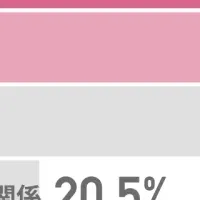
New Insights from Wounded Warrior Project Highlight Ongoing Issues Faced by Veterans and Proposed Solutions
New Insights from Wounded Warrior Project Highlight Ongoing Issues Faced by Veterans and Proposed Solutions
The Wounded Warrior Project (WWP) has released its third wave of the Warrior Survey, revealing persistent difficulties faced by post-9/11 veterans more than two decades after the 9/11 attacks. The survey surfaced significant struggles concerning mental health and financial stability among veterans.
Critical Mental Health Challenges
A staggering 82% of surveyed veterans reported experiencing sleep issues, a finding that correlates strongly with other mental health complications, including anxiety, PTSD, and depression. Over the past year, the findings revealed that 80% of veterans battled anxiety, while 77% suffered from both PTSD and depression. Alarmingly, more than a quarter of respondents reported having contemplated suicide in the last year. This alarming trend emphasizes the crucial need for mental health support and intervention.
Moreover, WWP's mental health initiatives, such as the Warrior Care Network and WWP Talk, have gained traction, with over 60% of warriors utilizing mental health support groups. These programs have provided over 68,600 hours significantly contributed to addressing challenges associated with PTSD and traumatic brain injury (TBI).
Financial Instability Affects Veterans' Lives
The survey highlighted that veterans face an unemployment rate threefold that of the general veteran population. Many warriors struggle to find jobs matching their skills, with rising living costs further exacerbating their financial woes. Approximately two-thirds of those reporting financial difficulties attributed their struggles to increased expenses.
In response, the Wounded Warrior Project has facilitated more than 1,280 job placements within the last year. Additionally, they have supported over 15,500 warriors with education and development resources, resulting in a significant economic impact of over $223 million. Financial assistance also reached nearly $2.8 million distributed across 1,650 households, showcasing an increased effort to stabilize veterans’ financial situations.
Urgent Need for Improved Healthcare Access
Veterans continue to face obstacles in healthcare accessibility, with extended wait times and limited appointment availability cited as the top issues. Furthermore, many warriors struggle to receive adequate treatment for chronic pain and other service-connected ailments. The launch of the Women Warriors Initiative aims to address the unique challenges faced by female veterans, who form one of the fastest-growing demographics in the veteran community.
WWP is advocating for essential policy adjustments to bridge the gaps in healthcare access and services. Among the recommendations put forth is the Veterans' Assuring Critical Care Expansions to Support Servicemembers (ACCESS) Act, which would enhance access to community healthcare solutions and alleviate long wait times.
Actionable Recommendations for the Future
The Warrior Survey not only underscores the challenges but also lays out a roadmap for actionable solutions. WWP encourages policymakers and communities to pursue:
- - Advancements in mental health resources to ensure prompt access and remove barriers to care.
- - Comprehensive healthcare strategies that address co-occurring conditions like sleep disorders alongside chronic pain and mental health issues.
- - Initiatives designed to strengthen financial management education and improve employment resources, ensuring veterans can attain long-term stability.
Lt. Gen. (Ret.) Walt Piatt, CEO of Wounded Warrior Project, expressed commitment to finding innovative solutions to support veterans. He emphasized that, “Together, we can find innovative and impactful solutions to keep the promise we made — to be there no matter what and bring them back to a life of hope and purpose.” This sentiment reinforces the urgency to address veteran challenges and transform findings into action, ensuring that our heroes are not forgotten.
Conclusion
The newly released Wounded Warrior Project survey offers vital insights that pinpoint the multifaceted challenges experienced by veterans today. It highlights the necessity for continued advocacy and robust intervention strategies tailored to enhance the quality of life for those who have bravely served. By translating the survey data into practical support and policies, there is hope that the tide can turn for our wounded warriors, allowing them to build brighter futures.
Topics People & Culture)










【About Using Articles】
You can freely use the title and article content by linking to the page where the article is posted.
※ Images cannot be used.
【About Links】
Links are free to use.